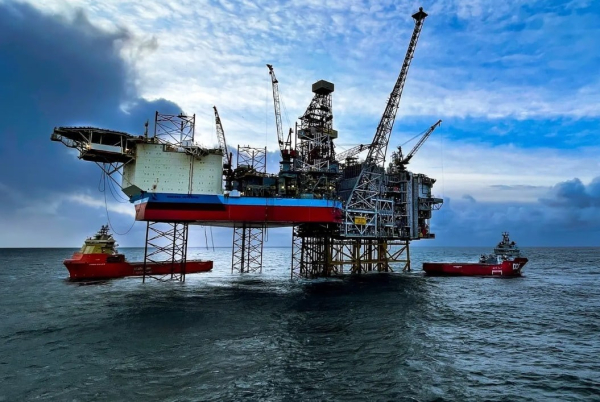
Scandinavian economies are the most resilient. Italy is the least resilient of the major EU economies. And no country in the EU has a less resilient economy than Romania (Photo: Aaron Greenwood)
Various bodies — the likes of the UN and the OECD — have called for more resilient economies. But what even is economic resilience?
It’s worth clarifying, briefly, what economic resilience is not. It is not simply the capacity to absorb shocks and return quickly to the status quo. Our economies are struggling to deliver environmental and social progress. No country has succeeded in providing widespread wellbeing and prosperity to all its citizens while also staying within planetary boundaries. At the current trajectory the future looks bleak.
The European Commission has put forward a holistic and forward-thinking concept of resilience. “Resilience refers to the ability not only to withstand and cope with challenges but also to transform in a sustainable, fair, and democratic manner,” it said in the wake of the pandemic.
In other words, resilience is not just about bouncing-back, but about bouncing-forward.
Resilience is a critical trait of economies of the future. To deliver a successful green transition without compromising on social goals, we desperately need economies that won’t be derailed by every shock and unexpected turn of events. Economic resilience can be the compass to guide us out of polycrisis. The problem right now is that no-one really agrees what it is.
Without an agreed definition or gauge, how can we be sure we are going in the right direction?
New research offers a comprehensive measure of economic resilience within the EU. It concludes that Scandinavian economies are the most resilient. Italy — in 19th position — is the least resilient of the major economies. And no country in the EU has a less resilient economy than Romania.
The new Economic Resilience Index seeks to fill the gap of a measure of how well economies can adapt to change whilst staying on track for long-term social and environmental goals.
The index is the result of a nearly one-year long process by the ZOE Institute. As a starting point we defined a higher purpose of the economy: to provide wellbeing for present and future generations within the earth’s limits.
We split this into six core functions. We then looked into understandings in the fields of psychology and ecosystems to answer, ‘what is resilience?’, and based on this selected a total of 27 indicators to assess the six functions.
The Economic Resilience Index paints a picture of the capacities of the EU’s economies to absorb, recover from, and adapt to shocks. Only when it is strong in all three dimensions — absorption, recovery and adaptation — can an economy thrive in times of change. The index sheds light, therefore, on how well economies are prepared for as-yet-unknown crises and for the transitions ahead.
Sweden top, Romania bottom
The results point to huge divergence in the resilience of EU members. The Nordic countries perform best in the ranking. Sweden comes out top, followed by Denmark, then Finland. Bulgaria, Greece and Romania prop up the table.
The countries at the bottom perform worse than the countries at the top in all six ‘dimensions’ necessary for resilience. This divergence is a big problem because the highly integrated European economy is only as strong as its weakest part. A lack of resilience in one national economy can have negative spillover effects for the whole of Europe.
The weakest countries tend to be those already hit hardest by recent crises — be it high inflation, economic impacts of Covid-19, or the euro crisis. National economies that have already suffered tend to be least prepared for the next crisis and least well-placed for the transitions we need. Long-standing fragilities in these economies — be it dependence on too few industries, regional inequality, weak institutions, poor educational outcomes, or other factors — make them more vulnerable in the first place, and this is compounded when crisis hits.
But, some large and powerful member states with traditionally strong economies are also comparatively poorly-placed to overcome future challenges. France is 11th in the table. Spain and Italy are down in 18th and 19th places.
Sign up for EUobserver’s daily newsletter
All the stories we publish, sent at 7.30 AM.
By signing up, you agree to our Terms of Use and Privacy Policy.
Italy performs strongly in terms of ‘economic independence’ factors; things like the complexity of its economy, and the diversity of its exports and imports. But these are not enough for it to be able to bounce-forward. It is weak in a whole bunch of other aspects necessary for resilience, including education and skills, investment, social cohesion, and regional inequality.
Austria offers a contrasting example. It is up in 6th place overall and scores highly in aspects covering social progress, the quality of its institutions and production capacities. But this masks weaknesses when it comes to economic independence — its supply chains and energy import dependencies make it vulnerable.
Another important lesson emerges from the Index as a whole; Gross Domestic Product (GDP) per capita — the dominant measure of economic performance — is an unreliable indicator of economies’ capacity to thrive in times of change. We found an unconvincing correlation between resilience scores and GDP. The over-reliance on GDP as the all-important indicator won’t get our economies on track to meet environmental and social goals when crises hit.
We will need to address the disparity between EU economies if Europe as a whole is going to succeed to navigate future turbulence and achieve sustainable prosperity. To do this we will need a comprehensive socio-ecological approach to assessing economic performance — economic resilience can be this compass.
Source: euobserver.com



